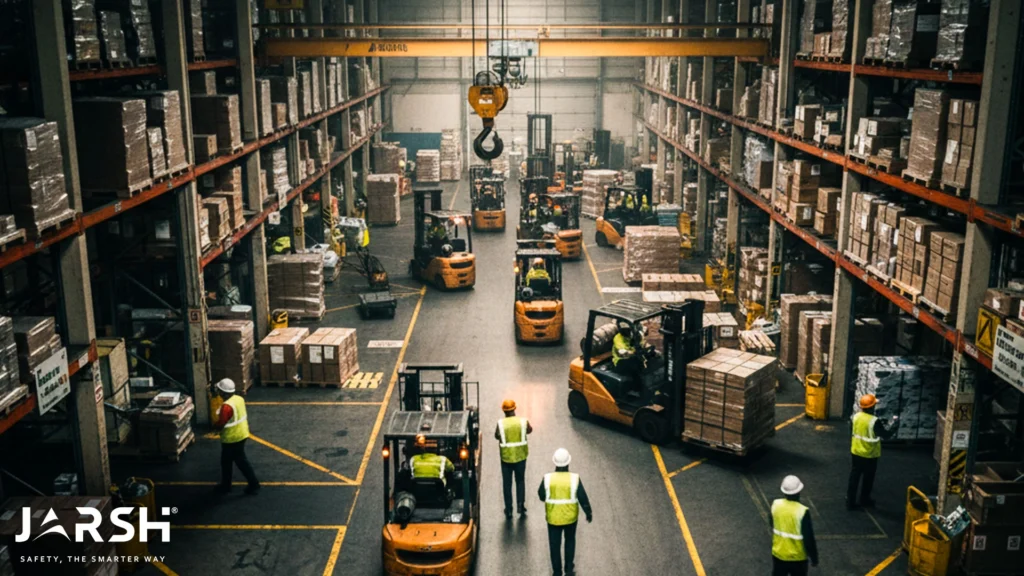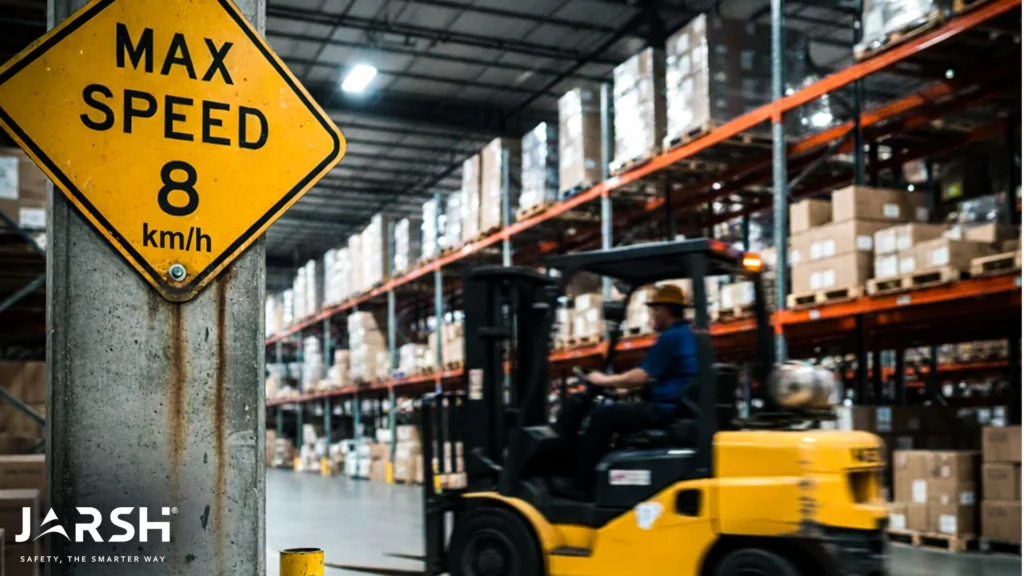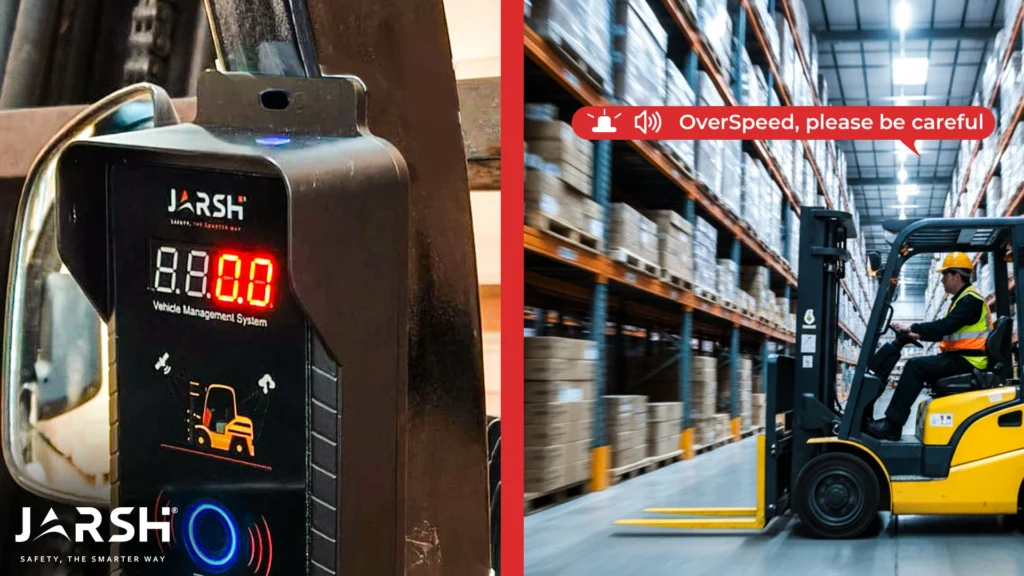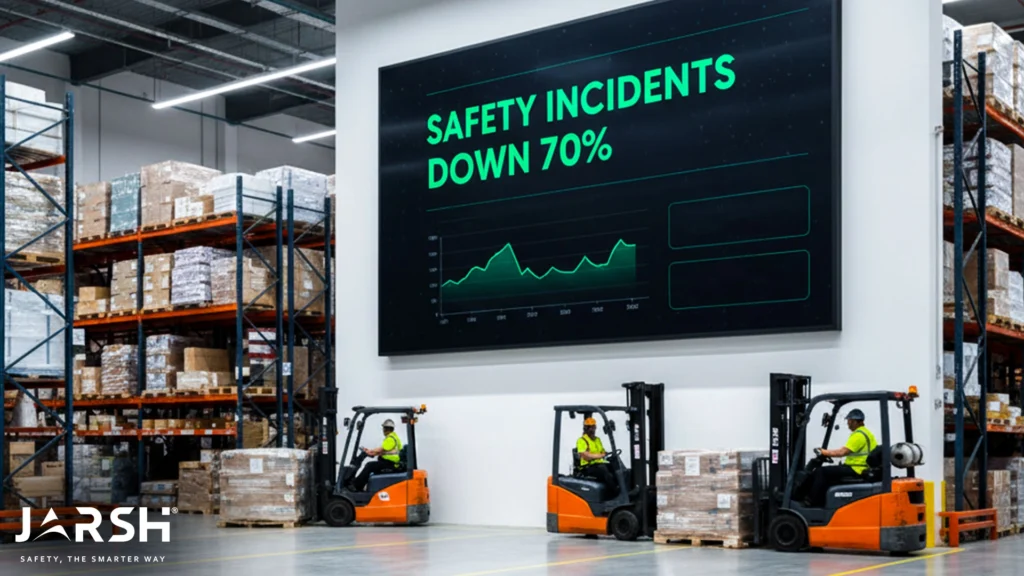BLOG
Smart Roads, Safe Roads: Reducing Human Error
in Traffic and Industrial Zones
NOVEMBER 15, 2025
CATEGORY: ROAD SAFETY

When Speed Meets Safety: The Hidden Risks of Vehicle Operations
Industrial and traffic environments are full of movement – forklifts loading materials, cranes maneuvering equipment, and site vehicles navigating narrow paths. But amid all this motion, human error remains the leading cause of on-site vehicle accidents.
Even a small lapse in attention – a missed signal, an unchecked speed, a seatbelt left unfastened – can lead to serious injury or downtime. In high-traffic zones like warehouses, ports, and construction sites, one unsafe maneuver can halt an entire operation.
Why Traditional Safety Practices Fall Short
Safety signs and manual supervision are important, but they rely heavily on consistent human attention. Unfortunately, fatigue, routine, and split-second distractions can break that chain.
Some common challenges include:
- Over-speeding in restricted or shared work zones
- Reversing accidents due to blind spots or poor lighting
- Non-compliance with seatbelt or direction rules
- Delayed reaction times during congestion or fatigue
Technology can help – not by replacing humans, but by reinforcing awareness, accountability, and consistency.

Smart Vehicle Safety: The Jarsh Approach
Jarsh’s Road Safety and Vehicle Management Solutions are designed to enhance operational control, visibility, and compliance in high-mobility environments. These systems act as real-time guardians, alerting operators and supervisors before incidents occur.
Key Systems at Work:
- Overspeed & Reversing Alert System (JVM-Speed)
- Predefined speed limits customized for specific zones and vehicle types.
- Instant voice and visual alerts when thresholds are crossed.
- Reverse detection with audible warnings to prevent collisions.
- Centralized reporting for analytics and trend tracking.
- Seatbelt Alert & Direction Warning System (JVM-Seat-Belt)
- Prevents vehicle startup until the operator’s seatbelt is secured.
- Real-time voice prompts like “Fasten your seatbelt” for compliance.
- Direction indicators and lockout alarms for unauthorized movement.
- Smart Stop & Go Batons (JSG-1) and Smart Alcohol Detection Batons (JAD-1)
- LED-based red/green signaling for traffic management.
- Integrated alcohol detectors with voice-guided prompts and data storage for safety enforcement.
Together, these tools form a multi-layered safety net, tackling everything from driver behavior to crowd control and regulatory compliance.

Use Case: Inside a Manufacturing Plant
Forklifts and tow trucks move constantly between storage areas and production lines. Despite trained operators, near-misses happen when fatigue or blind spots come into play.
With the JVM-Speed system installed, every vehicle is continuously monitored for speed. The moment an operator exceeds a zone limit, the system triggers a voice alert and flashing warning – preventing an accident before it happens.
Supervisors can later review event data to identify high-risk patterns and improve driver training.
Human Error, Digitally Minimized
Smart systems like these don’t remove the human element – they enhance it. By automating monitoring, alerting, and reporting, they help workers focus on safe driving rather than constant self-correction.
The result:
- Fewer collisions and near-misses
- Higher compliance with safety protocols
- Reduced downtime and equipment damage
- Improved accountability and data-backed safety insights

The Road Ahead: Smarter Industrial Mobility
As industrial and urban operations grow more complex, real-time vehicle management becomes a necessity, not an option.
Integrating IoT-enabled safety systems ensures that even in dynamic, high-traffic environments, human judgment is supported by intelligent safeguards.
By embracing these systems, organizations can predict risks, prevent incidents, and protect people – the very foundation of modern safety.
